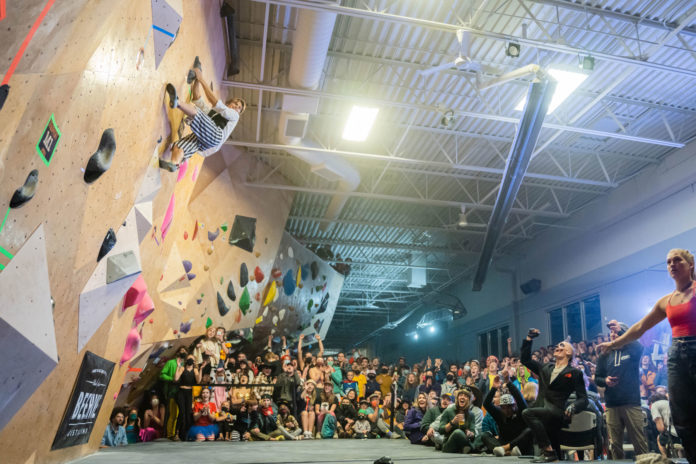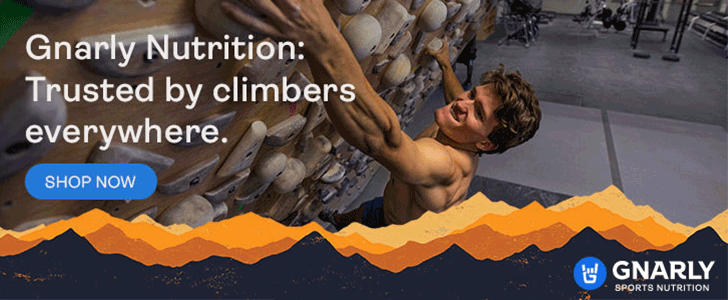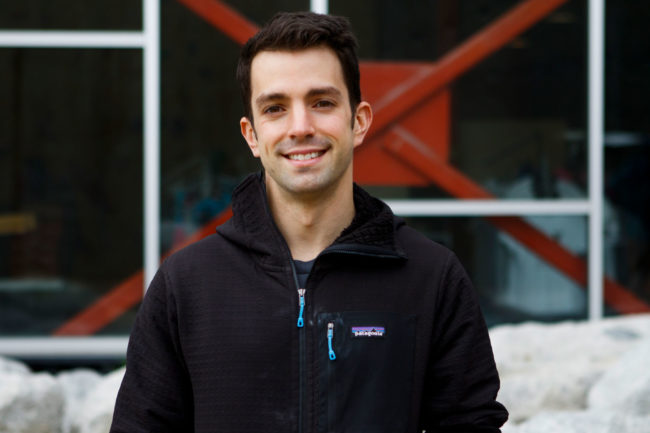
Name: Justin Wyse
Title: Program Director at The Front
Location: Salt Lake City, Utah
Behind the Desk is a series that interviews people who are part of the climbing industry. In this installment, we’re in Salt Lake City with Justin Wyse, Program Director at The Front gyms. Wyse’s duties are quite varied. In fact, the programming of The Front is significantly assorted, from classes and competitions to something as unique as the Impact Coalition. (Started by The Front’s CEO and owner Dustin Buckthal in May of 2018 and managed by the gym’s Director of Community Impact Alexx Goeller, Impact Coalition is The Front’s way of contributing to local non-profits with monthly donation add-ons.)
It all made for a fascinating chat with Wyse, underscored by Wyse’s belief that community lies at the heart of any gym’s success.
BURGMAN: Let’s start with broad questions: What’s it like doing programming in a region that has one of the largest concentrations of elite-level climbers anywhere in the country? Or, more specifically, does that high concentration of crushers influence your programming decisions at all?
WYSE: In terms of programming, it doesn’t impact it that much because the number of crushers—although there are very many in Salt Lake City—is still pretty small compared to the general population of Salt Lake City and our general membership base. We use a dot system for grading, and the bulk of people climbing in our gym are probably in the green dot range, which would be V4-V6, or maybe 5.11a-d range…which still might be a bit higher than membership populations in other regions.
But in terms of how that influences programming, most of the people above green dot level already know what they need to do—they know how to program, they know how to train for themselves (although we do provide private coaching options); and for the truly elite athletes, Josh Larson is probably coaching them through USA Climbing. Where we come in is trying to focus on building life-long climbers. So, how do we get people into the gyms, build new climbers, and get them into the ecosystem?
The way that we target our programming is not necessarily just climbing-focused; there’s a really big emphasis on trying to build better cohesion within the community, so that folks feel like The Front is a home away from home. There are a lot of aspects to that beyond just climbing, like a dog run, cafes, coworking spaces, and a vast array of programming—from Jiu-Jitsu to yoga to group fitness classes and spin classes. So, back to your question, in terms of catering the gyms’ programming to the elite base, we don’t really do it that much, although I suppose the routesetting does; we want to make it worthwhile for climbers of all levels to be using our spaces.
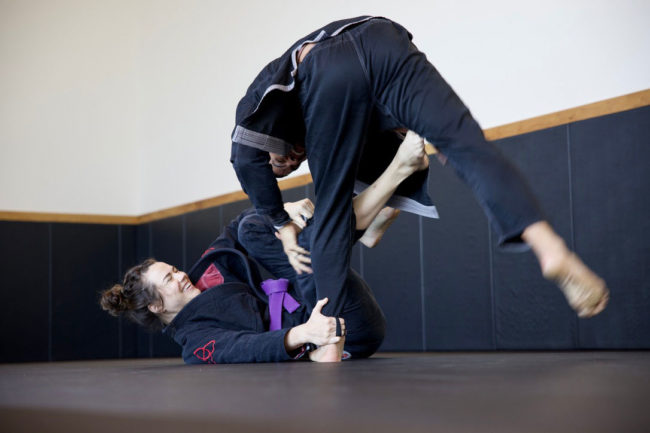
Yes, as someone who is quite familiar with The Front’s storied history, I’ve noticed more and more types of programs being offered—for example, you mentioned Jiu-Jitsu. How do you decide what new offerings to bring into the programming fold?
I came to The Front shortly after the South Main location opened up—a little bit over a year ago. So, the growth of our programs—from group fitness and yoga, specifically, and from site-to-site—nearly doubled in the past year. I think people were just tired of working out at home [due to the pandemic] and wanted to be in social spaces and wanted to go back to classes.
Something that [The Front’s CEO and owner] Dustin Buckthal does a really great job of is making a lot of decisions based on data—and having data being the driving factor rather than just hunches. So, predicting trends and figuring out what our membership base is doing—that helps us make decisions on what programming we should offer and how frequently we should offer it. And that’s all about knowing your community and interacting with your community on a face-to-face level.
Another important thing is really looking closely at that data. Who is showing up…and for what? And what else is happening around the Salt Lake area that we could also be doing or that we could capitalize on? If the answer is something that could help build The Front’s membership base and expose more people to climbing, maybe it’d be worth adding.
As an example, we have a bunch of space near the parking lot of the South Main location. We have big ideas of things we want to do with that space in the future, but until that time comes, it was not going to be used—so Dustin turned it into a volleyball court. So, we now have a volleyball court and volleyball tournaments, another way to bring people together and allow people to enjoy each other’s company other than climbing…because you can’t climb all the time, right? We also have ping pong tournaments that we host. Just ways that the community can interact with each other and build lasting relationships.
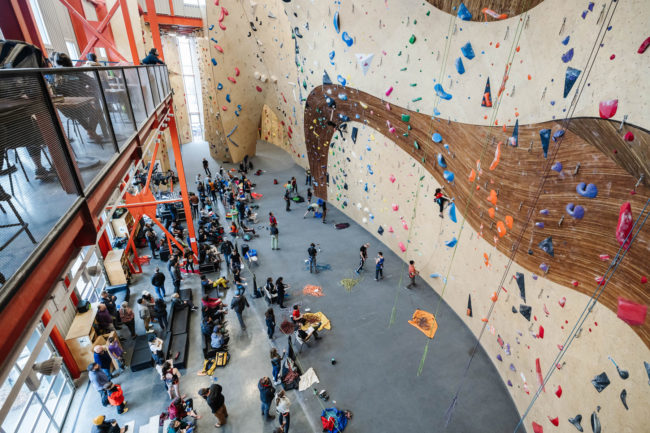
I can’t help but notice that the concept of community seems to be at the heart of all that. You’ve mentioned “community” several times, and it doesn’t sound like it’s limited to a “climbing community.”
Well, certainly as someone who came from coaching, we’re trying to build lifelong climbers. But, you know, once your skin is totally wrecked and your muscles are fried from climbing, what are you going to do next? Why can’t that thing that you’re going to do next also be at the gym—whether that’s going to the cafe or stopping by the dog run or a summer music series where you can grab a drink with your friends, hang out, and listen to some live music? Why does that have to be somewhere else? That doesn’t mean that The Front is going to try and have everything under the sun. But at the same time, what are all the things that we could have at The Front that would keep people hanging out here?
And in terms of how it is all delineated, we have an events team that’s run by our Director of Community Impact, Alexx Goeller—and that team runs all the events at The Front, from competitions to bouldering leagues to live music concerts. Programming is split into the Amenities and Climbing Programs departments, which I oversee. Amenities is yoga (managed by SJ Burkholz), Jiu-Jitsu (managed by Molly Jimenez), and group fitness (managed by Al Hahn). Climbing Programs is split into youth and adult—and youth is broken down by team level: Phil Symons is our head coach, and we also have two youth program coordinators (Keely Carolan-Pratt and Zach Scott), two competition team coordinators (Hilary Silberman and Andrew Thaller), and an intermediate team head coach (Kelsey Hanson). David Farkas manages the adult programs, which include classes like Bouldering 101, Learn to Lead, Climbing with Confidence, etc. I just want to make sure I’m not taking credit for what they all do!
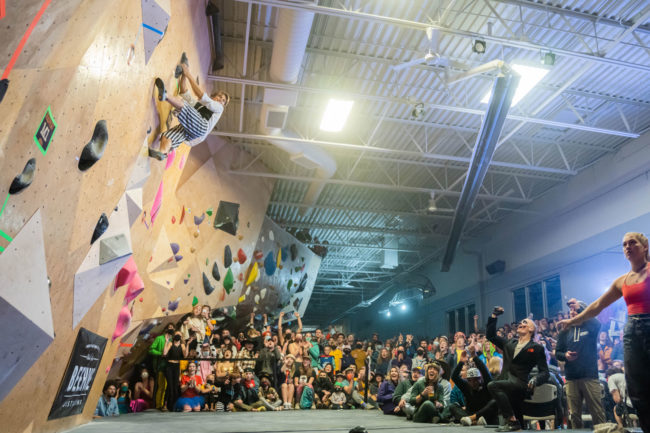
I’m glad you mentioned volleyball because I’ve seen many gyms over the years that have un-utilized or under-utilized lawn or parking lot space. I always think, “Gosh, this gym should do something with this big, unused outdoor area!”
Absolutely! I’ve been working in gyms since, like, 2008, and I agree. And Dustin, as a business owner, is always looking for opportunities to build upon our growing community. Granted, space utilization can be a huge risk, especially in a place like Salt Lake City that can get really cold in the winter. If you talk to different architects or designers or prospective gym owners, they might laugh at the idea of utilizing an outdoor space for something like a courtyard or a volleyball court—since it can only be used for certain months out of the year. But I would encourage them to take a look at how it has worked for The Front, in terms of the different things we can do in the outdoor spaces and the events that we can host and the community that those spaces can help build. Is more climbing space really what you need—or do you need additional space where people can interact? I think too often people are thinking about gym design in a very linear way and thinking about what has already been done in the industry…instead of thinking, “How can I evolve the industry standard?”
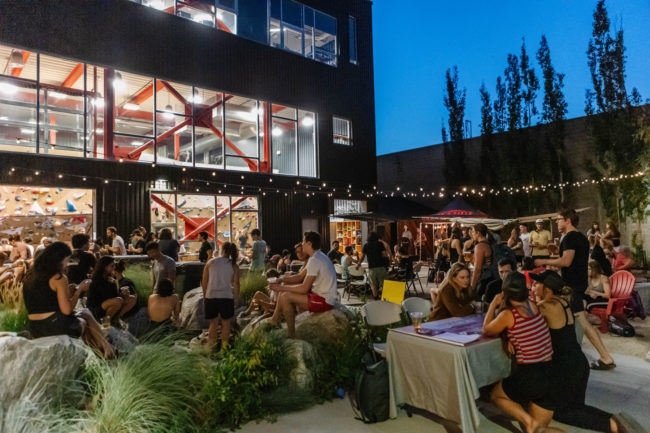
You mentioned earlier that you oversee a few different departments with a number of different staff members. What are some keys to making colleagues and coworkers feel appreciated?
What I try and do as a manager is be as accessible as possible and be able to offer my assistance in any way possible. Also, I create structure and consistently check in. I give people as much autonomy as possible to be able to do their jobs effectively, but I’m also there in a supporting role. Honestly, I’m there almost as a “coach”—to be able to provide them with additional training or additional ideas. It’s not just leading by example; it’s trusting the people that you have at certain jobs to do what they were hired to do; it’s trusting their instincts and also providing insights. I don’t necessarily dictate how a plan should be followed through, but I can offer tweaks if necessary or put my foot down, obviously, when it comes to risk management or liability concerns.
In order to create a really good environment and appreciate your employees, it goes beyond just doing fun things together. It’s a lot more about understanding and valuing the knowledge base that they bring to the role. It sounds silly, but it really is that simple—showing up for your team, being accessible for your team, and listening to your team and applying their feedback. I think a lot of managers view it like, “How can I get this person to be the best at their current job?” Instead of, “How can I help make this person the best person that they can be?”

John Burgman is the author of High Drama, a book that chronicles the history of American competition climbing. He is a Fulbright journalism grant recipient and a former magazine editor. He holds a master’s degree from New York University and bachelor’s degree from Miami University. In addition to writing, he coaches a youth bouldering team. Follow him on Twitter @John_Burgman and Instagram @jbclimbs. Read our interview Meet John Burgman, U.S. Comp Climbing’s Top Journalist.




